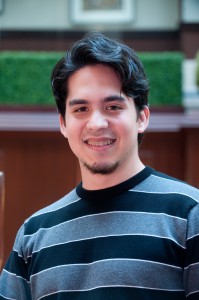From Cuba to Cambridge by way of Miami
Alejandro Rodriguez’s circuitous path to the Casimir force and a life in science began in Cuba.
Rodriguez’s stepfather, a physics professor, was fired for refusing to identify the writers of a letter opposing the Communist government. His mother also lost her teaching job, so the family fled to Mexico with a plan to immigrate to the United States.
His stepfather was able to immigrate legally. But an agent hired to get Rodriguez, then 13 years old, and his mother legally into the country raised his fee, so they crossed the border illegally. They later received political asylum, settled in the Miami area and became citizens.
Rodriguez says his stepfather’s physics background had little direct influence on his career path. In middle and high schools he was more concerned about fitting in than about grades. The epiphany came his sophomore year, when he took his first physics course.
“I remember coming home to my mom every day and saying, ‘Why didn’t I study this before?’” Rodriguez says. He told his school counselor he aimed to be valedictorian, and achieved his goal while taking multiple advanced placement courses. He chose MIT largely because his idol, Richard Feynman, also was an undergraduate there.
Rodriguez remained at MIT for graduate school and earned his Ph.D. this spring. He won’t even have to cross the Charles River for his next stop: a postdoctoral fellowship at Harvard University.
Besides possibly testing the Casimir analog computer, he’s interested in applying the numerical techniques the group has developed to interactions in finite-temperature cases, in which one object is warmer than another.
About the Author
The author is a former Krell Institute science writer.





